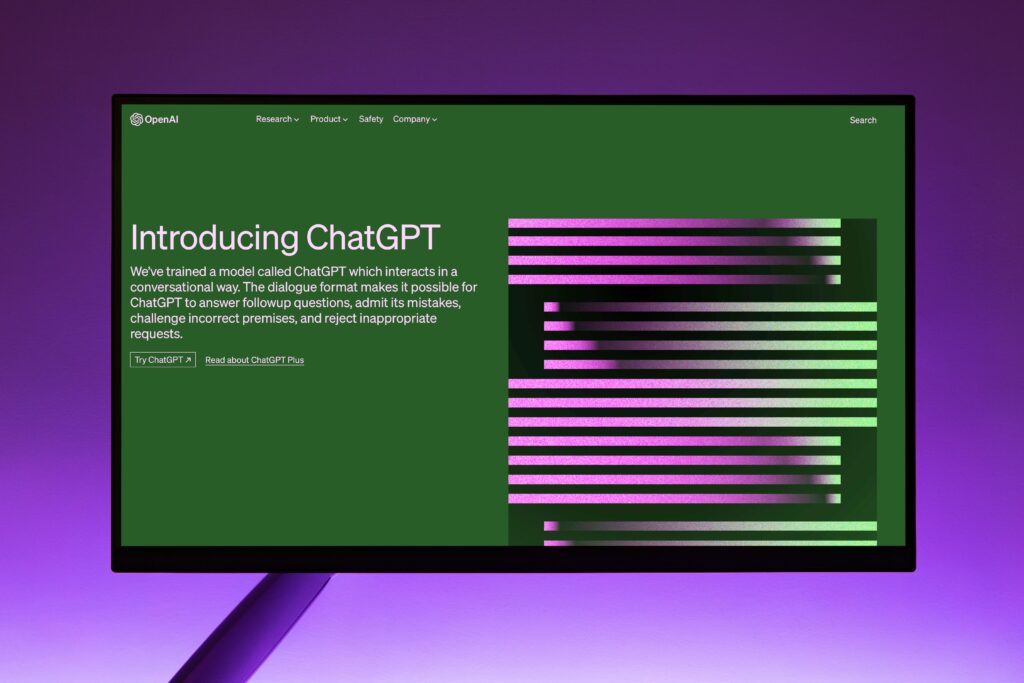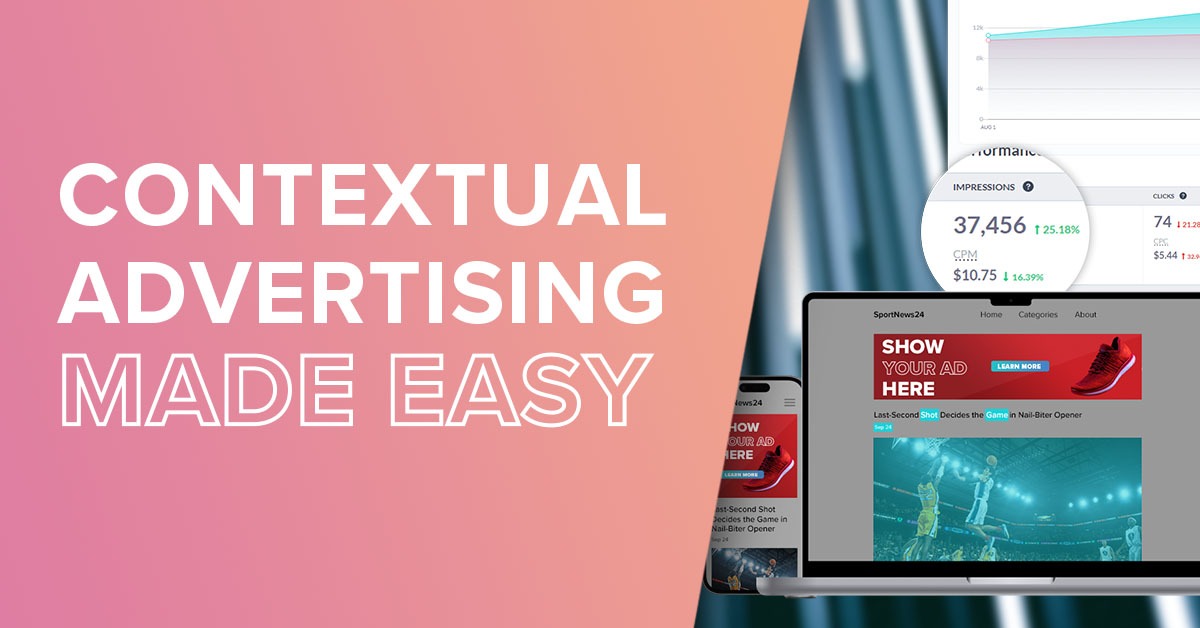Using ChatGPT in Programmatic: 3 Simple Steps
mars 23, 2023

For the modern digital marketer, programmatic advertising has become a critical aspect of the paid advertising strategy, with over $123 billion dollars spent last year.
With that said, the competition is fierce and many marketers find themselves struggling to effectively reach and engage their target audience.
Issues such as suboptimal targeting, low-performing ads, and under-optimized landing pages can lead to wasted ad spend and low conversion rates.
As of November 2022, marketers have a new tool to play around with. Enter ChatGPT, a language model AI now on everyone’s lips.
ChatGPT can do anything from coding to ad copywriting (with some creative limitations of course) and has shown the potential of AI assistance for marketers.
The impressive AI has real applications for improving the efficiency and performance of programmatic campaigns and digital marketing in general.
And with the launch of GPT-4 (an improved version of ChatGPT), marketers have been served with an extremely powerful tool on a silver platter (which also is free!).
With the right approach, marketers can use ChatGPT-4 to launch campaigns that result in more conversions and higher return on investment.
That being said, only around 40% of marketers are using ChatGPT to support them in their jobs.
This blog article will cover the top 5 ways you can use ChatGPT to boost your programmatic campaigns and get ahead of 60% of marketers.
How to use ChatGPT in digital marketing
You can use ChatGPT to help generate ideas for your marketing campaign copy by asking it to provide suggestions based on specific criteria or parameters you provide.
You could for example ask ChatGPT to generate headlines for your banners, by writing something along the lines of: ”Suggest 5 headlines for a new dog toy product on my e-commerce that is targeting a millennial audience”
Note that we asked for 5 alternatives (you may as well ask for 20) to get more ideas. Also, the more details regarding the audience and offering you give, the better answer you’ll get!
You can also get inspiration for scripts or ad copy by writing:
”Write a 30-second ad script for a new coffee product that emphasizes its unique flavor and high-quality organic ingredients.”
Have you ever had a hard time getting inspiration for social media posts? Well, with ChatGPT those days are likely to be history pre-2023.
You can effectively write something along the lines of: ”Write 15 creative and engaging Instagram post captions to promote a new vegan restaurant.”
BOOM – you just got 15 new social media posts!
Just remember, whether you’re using ChatGPT (or the newer GPT-4) for social media or ads: the more information you provide about your audience, brand voice, and campaign goals, the more effective and relevant the suggestions from ChatGPT will be.
Keep reading for more examples…
Programmatic Advertising Strategy
Before starting an advertising campaign, it is crucial to have a clear strategy in place.
ChatGPT can assist marketers in creating a programmatic campaign strategy by analyzing data. This could be demographic information, user behavior, and search history, to identify patterns and characteristics that indicate a user is a good fit for the campaign.

This information can be used to create a targeted campaign that maximizes the return on investment.
Ad Copy
Once you’ve developed a campaign strategy and identified your target audience, the next step is to generate ad copy that will capture the attention of potential customers.
ChatGPT can be fine-tuned on a dataset of successful ad copy to generate new ad copy that is likely to resonate with the target audience.
How? Share examples of ad copy you like from previous campaigns, and tell ChatGPT to meet certain specifications (for ex. character count).
This can help you create ads that stand out from the competition and drive more clicks.
Pro tip: Use the “act as” hack at the beginning of your prompt for generating copy. Example: “Act as a copywriter at a digital advertising agency.”
Keep reading to find out how to get the best output from ChatGPT…

Advertising Optimization
Creating great ad copy and targeting the right audience is only the first step. You also need to ensure that your ads are performing well, and ChatGPT can assist in this process.
You can use CHatGPT (and especially GPT-4) to analyze the performance of existing ads and make recommendations for changes to the ad copy or targeting strategy that could improve the click-through rate (CTR).
This can help you to improve the effectiveness of your ads and increase conversions.
Landing Page Optimization
Let’s say you’ve got perfect ad copy and targeting, and your programmatic campaign is driving tons of traffic. If your landing page content isn’t compelling and optimized, you’ll miss out on conversions.
You can use ChatGPT to generate landing page content that is optimized for conversions. Or, even better, improve all the landing pages you already have.
The model can be fine-tuned on a dataset of successful landing pages to generate a new page with similar characteristics that are known to convert users.
By teaching ChatGPT to create landing pages that are more likely to convert visitors into customers, you can reduce opportunity costs of missed conversions and boost your campaign ROI.
Putting ChatGPT to Use: 3 Steps
Using ChatGPT for fun is easy, but getting answers that actually inspire your work and help you with your marketing campaigns requires a bit more effort.
To begin with you need to work with prompts. Prompts are descriptions that act as a starting point for ChatGPT to do its magic. You do this by writing what you want ChatGPT to do or what kind of response you need.
Effective prompting
Prompts are key to getting the most effective answers from ChatGPT which also applies to GPT-4.
We’ve boiled it down to 3 crucial steps:
1. Define ChatGPT’s role
Giving ChatGPT a role in your scenario helps define what you expect it to do. For example:

ChatGPT asks follow-up questions for you to help it achieve what you want.
This is why the “Chat” in ChatGPT is a critical part of the feature. Remember, you can always keep the conversation alive and ask questions back to ChatGPT.
2. Chained prompting
Keep the conversation going and maximize the output by continuously asking questions and requiring more knowledge.
“Chained prompting” makes sure you get the answers you want. This means giving ChatGPT smaller tasks to do one at a time, so it can understand what you want better.
For example, let’s say you want to write a story. Instead of telling ChatGPT to write the whole story, you can first ask it to make a plan, like a list of things that should happen in the story. Then, you can ask it to make a list of short descriptions for each of those things.
This way, if ChatGPT makes a mistake or doesn’t understand something, you can fix it before it writes the whole story. It helps save time too!
An Example Chained Prompting Write a blog post about how marketers can use ChatGPT for their Programmatic Display campaigns. First give me the outline, which consists of a headline, a teaser, and several subheadings. [ChatGPT Output.] Now give me five key messages for each subheading. [ChatGPT Output.] Now break this out to 5 social media posts. [ChatGPT Output] Etc. etc.
3. Adapt the output
Even if you’ve done everything we suggested earlier, you might still wanna tweak your content to fit different platforms like LinkedIn, Twitter, or Facebook. Make sure you adjust the tone and format to match each channel.
Another perfect way ChatGPT’s got you covered! Simply give it info on which platform you’re targeting and the AI will take care of the rest, including any specific formatting requirements.
This can be used for anything from email headlines, pitch decks, or ads. By adapting the output, ChatGPT gives you exactly what you want!
Conclusion
By using ChatGPT and GPT-4 as a tool in your campaigns you can improve the efficiency of your campaigns and drive better results and more conversions.
Let’s take a fictional case of an ecommerce retail brand like Zalando that uses this AI technology to enhance their advertising efforts.
The story goes like this:
Zalando are tired of pouring money at ineffective ads that just didn’t seem to resonate with their target audience.
They needed to change their approach, but with so many moving parts to their advertising campaigns, they didn’t know where to start.
Zalando asked ChatGPT to analyze all their data and could get a targeted programmatic campaign strategy that maximized their return on investment by defining ChatGPT’s role and using chained prompting.
By supplying GPT with all the information needed, the AI technology generated ad copy that stood out from the competition. It also captured the attention of their target audience and more conversions on their landing page.
After adapting the output based on results, ChatGPT also analyzed the performance of Zalando’s existing ads and provided recommendations for changes that improved their click-through rate.
Zalando incorporated these suggestions into A/B testing, ultimately improving the overall effectiveness of their ads and increasing conversions.
By using ChatGPT, Zalando was able to stay ahead of the curve and gain a competitive edge in the crowded world of programmatic advertising.
With more efficient spending, better targeting, and higher returns on investment, Zalando’s advertising campaigns were finally delivering the results they were looking for.
So, if you’re looking to get ahead of 60% of marketers out there, start getting the most out of ChatGPT by using our three steps. And of course, never stop experimenting!


